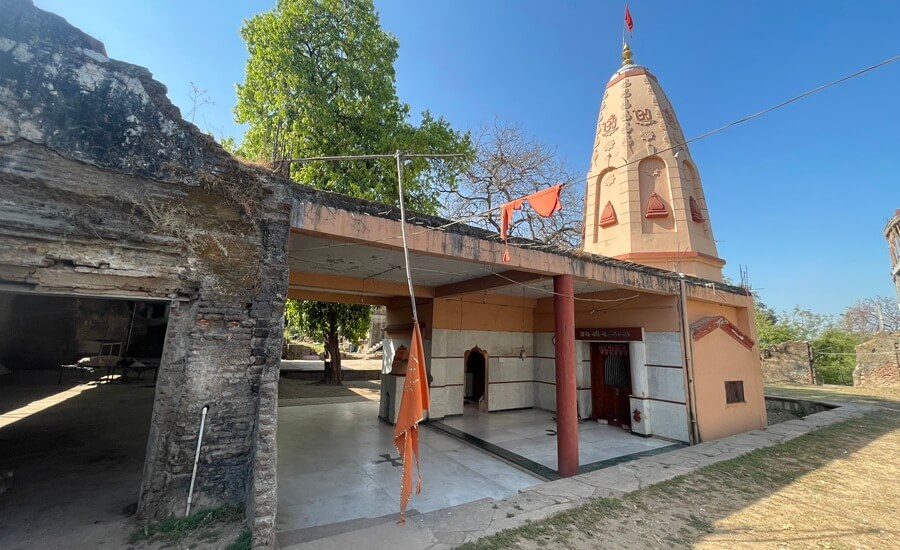
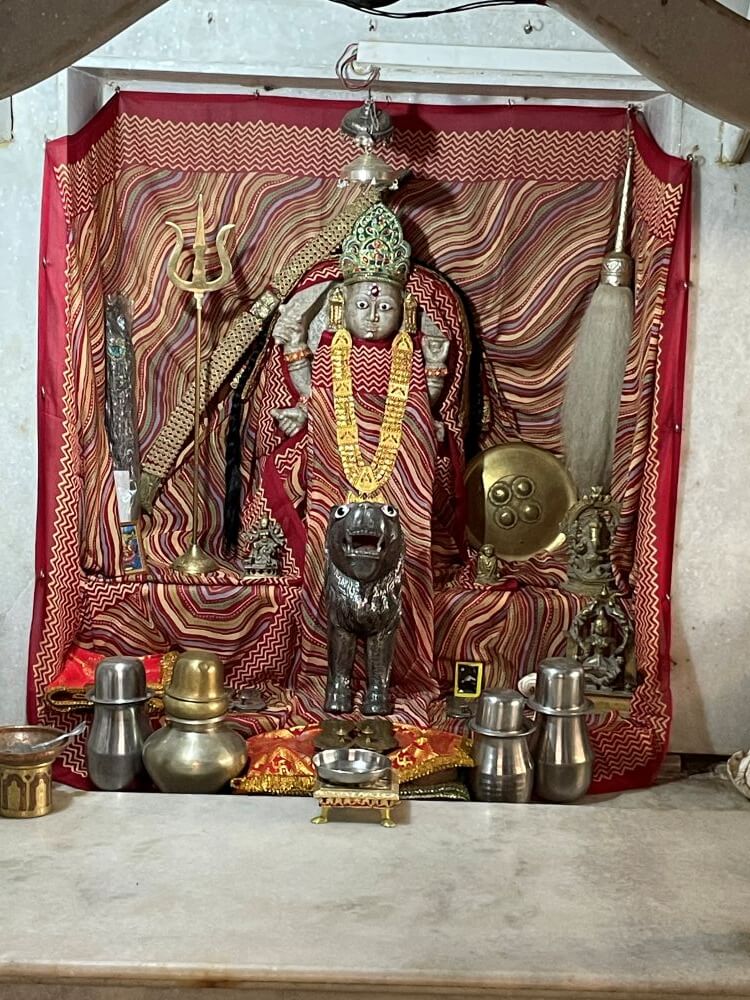
Located at the Triveni Sangam (confluence of the Narmada, Orsang and Gupt Saraswati rivers), Chandod – known as the ‘Dakshin Prayag’ – is home to the ancient Chandika Mata Temple. It is believed that the town was originally named Chandipur after the goddess. Situated on the banks of the Narmada River, the goddess is said to fulfill all wishes, according to devotees. Pilgrims performing the Narmada Parikrama make it a point to visit this sacred temple. This area is also referred to as Chandaditya Tirtha.
According to legend, demons Chanda and Munda once installed a Chandaditya Shivling at this site to gain divine powers. The 91st chapter of the Narmada Purana narrates this story. Sage Markandeya says: ‘तीर्थं परमपावनम्। चण्डादित्य नृपश्रेष्ठ। स्थापितं चण्डमुण्डयोः।।’ (Tīrthaṁ paramapāvanam, Chandāditya Nṛpaśreṣṭhaḥ, sthāpitaṁ Chanda-Muṇḍayoḥ) This means that Chandaditya Tirtha is supremely sacred and was established by the demons Chanda and Munda.
As per the tale, According to this story, the demons Chanda and Munda performed severe penance on the banks of the Narmada to please Lord Surya (the Sun God). Pleased with their penance, Surya granted them the boons they desired: invincibility and immunity from all diseases. Afterward, these demons established a Shivalinga here for attaining spiritual accomplishments. 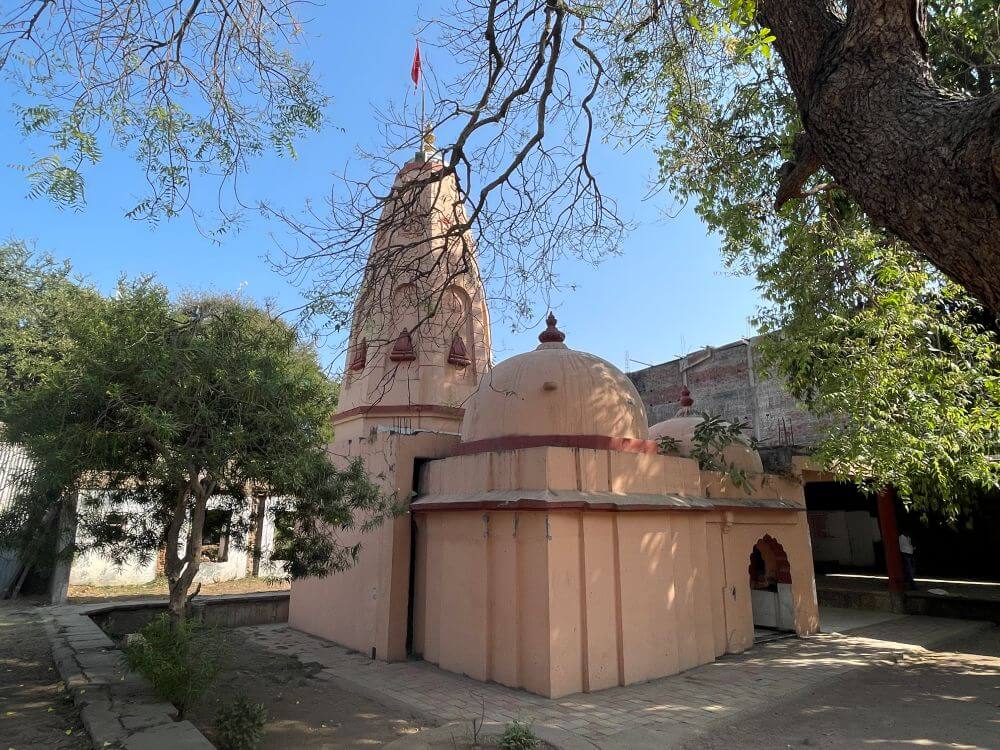 According to another mythological account, these demons became arrogant due to the boons given by Surya and began troubling sages and people.
According to another mythological account, these demons became arrogant due to the boons given by Surya and began troubling sages and people.
Eventually, to get relief from the demons’ oppression, the sages prayed to Adishakti Bhagavati (the Primordial Goddess). Afterward, Adishakti took the form of Chandika and slayed the demons Chanda and Munda. Then, to calm her anger, the goddess meditated on the banks of Narmada. Over time, a temple of Goddess Chandika was built here.
Another legend from the Durga Saptashati says that demons Shumbha and Nishumbha defeated Lord Indra and took over the three worlds. The defeated gods prayed to Bhagwati and Goddess Parvati appeared. 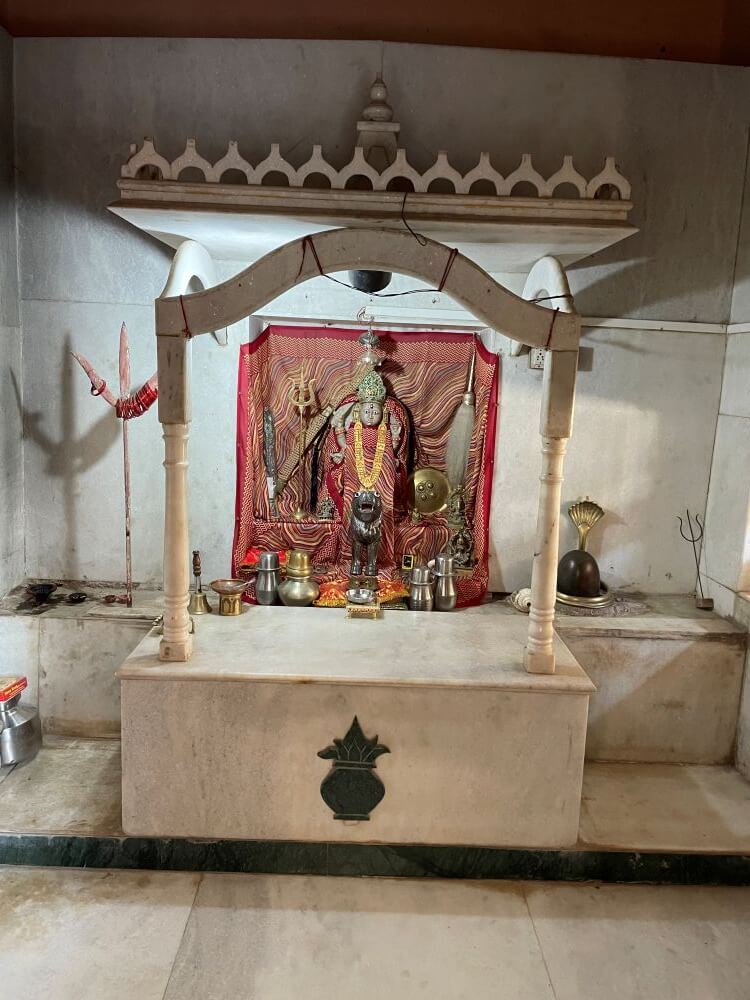 From her form, Ambika (Koushiki) emerged. Chanda and Munda, who were Shumbha and Nishumbha’s servants, saw her and praised her beauty to their masters. Shumbha sent a marriage proposal to Ambika, which she rejected. He then sent Chanda and Munda with an army to capture her. Infuriated, Ambika’s wrath took form as Goddess Kali, who killed the entire army and beheaded Chanda and Munda. The force of her sword strike was so mighty that their heads flew from the Himalayas to this very site. For slaying Chanda and Munda, the goddess was named Chamunda. This temple was later established in her memory and the town, once called Chandipur, gradually came to be known as Chanod / Chandod.
From her form, Ambika (Koushiki) emerged. Chanda and Munda, who were Shumbha and Nishumbha’s servants, saw her and praised her beauty to their masters. Shumbha sent a marriage proposal to Ambika, which she rejected. He then sent Chanda and Munda with an army to capture her. Infuriated, Ambika’s wrath took form as Goddess Kali, who killed the entire army and beheaded Chanda and Munda. The force of her sword strike was so mighty that their heads flew from the Himalayas to this very site. For slaying Chanda and Munda, the goddess was named Chamunda. This temple was later established in her memory and the town, once called Chandipur, gradually came to be known as Chanod / Chandod.
Chandod lies at the confluence of three rivers, which is highly sacred in Hinduism. Many rituals and post-death ceremonies are performed year-round at this holy sangam. Among the six ghats along the river, the most famous is the Malharrao Ghat, named after Malharrao Holkar, a Maratha warrior and father-in-law of Ahilyabai Holkar.
The Chandika Mata Temple is situated inside a large wada (traditional mansion) on one side of the village. The mansion once had a tall boundary wall, now in ruins. Inside its large courtyard are two temples – Chandika Mata Temple and Adityeshwar Mahadev Temple.  Though ancient, the temples have been renovated in recent times.
Though ancient, the temples have been renovated in recent times.
The Chandika Mata Temple is small and modest, with a newly built open hall (sabhamandap) and a sanctum (garbhagriha). The sanctum is topped with a tall shikhara (spire). Inside, a serene idol of Chandika Mata stands on a marble platform within a simple shrine. The goddess is four-armed, adorned with ornaments and weapons and rides a lion. She wears a crown and to her left is a sword and trident, while to her right is a brass shield.
Adjacent to this temple is the Adityeshwar Mahadev Temple, consisting of a porch, main hall, vestibule and sanctum. The main hall and sanctum have domed spires. There are three entrances to the hall. Near the front entrance is a shrine with a Shivling. 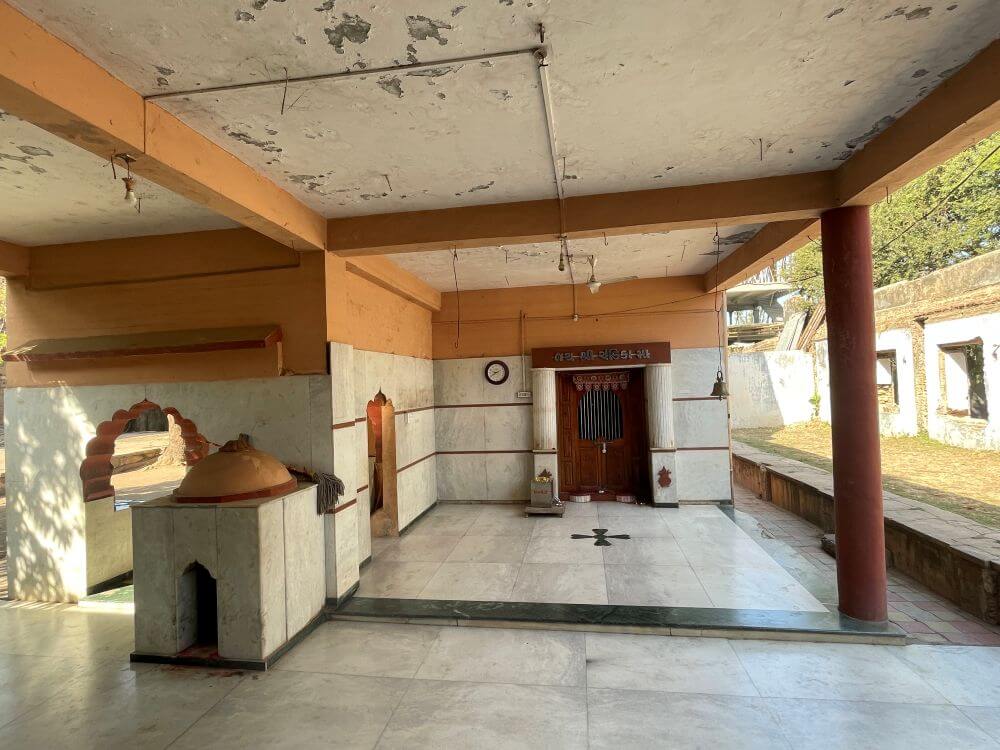 Inside the sabhamandap is an ancient Nandi statue carved from marble, with a tortoise idol in front. In one corner, there’s a beautiful marble idol of Surya Narayan (Sun God) seated in padmasana (lotus posture) on a chariot pulled by seven horses, with Aruna as the charioteer. Within the inner chamber are idols of Hanuman and Ganesha. The sanctum houses a Shivling on the floor, over which a brass serpent forms a canopy. Above it is a galantika (water vessel for abhishek). Behind, on the sanctum wall, is a statue of Goddess Parvati.
Inside the sabhamandap is an ancient Nandi statue carved from marble, with a tortoise idol in front. In one corner, there’s a beautiful marble idol of Surya Narayan (Sun God) seated in padmasana (lotus posture) on a chariot pulled by seven horses, with Aruna as the charioteer. Within the inner chamber are idols of Hanuman and Ganesha. The sanctum houses a Shivling on the floor, over which a brass serpent forms a canopy. Above it is a galantika (water vessel for abhishek). Behind, on the sanctum wall, is a statue of Goddess Parvati.
Darshan at Chandika Mata Temple is available daily from 7:00 AM to 8:00 PM. Many Narmada Parikrama pilgrims visit this temple during their spiritual journey. In earlier times, pilgrims would rest in the temple mansion and then visit other temples in the area. Navratri, Maha Shivratri and other festivals are celebrated here with great devotion.



